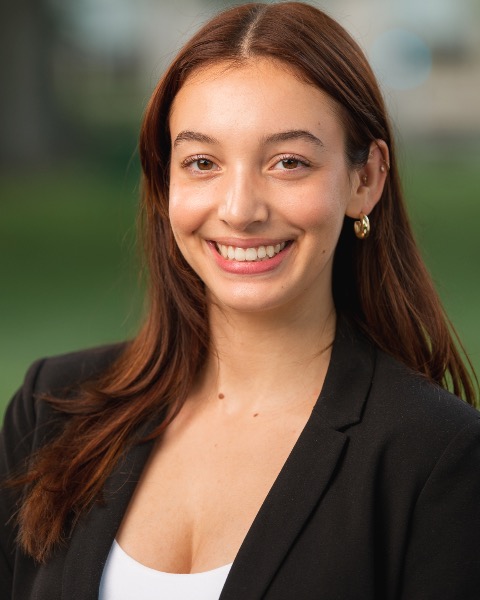Cellular and Molecular Bioengineering
Validation of Bidirectional Promoters as a Novel Tool for Transgene Coexpression
(H-316) Validation of Bidirectional Promoters as a Novel Tool for Transgene Coexpression

Angelina W. Schorr (she/her/hers)
Biomedical Engineering Undergraduate Student
BMES Brown
Methuen, Massachusetts, United States- SN
Sarah Nemsick
PhD Candidate
MIT, United States - AH
Anders Hansen
Assistant Professor of Biological Engineering
MIT, United States
Presenting Author(s)
Co-Author(s)
Primary Investigator(s)
In the study of mammalian cells, researchers often need to express multiple genes not on the genome, defined as transgenes, at the same time. Expression of multiple transgenes allows for the visualization of protein interactions, modification of existing biological pathways, study of mutant proteins in disease, and so on.[1-2] In these applications, two or more genes are often required to be expressed at specific ratios. However, trying to achieve ratiometric expression with the existing genetic tools is difficult. Bidirectional promoters (BDP) are a promising solution for coexpressing mammalian transgenes. BDPs are two divergent genes with less than 1000 base pairs between their transcription start sites.[3] Previous research on eukaryotic BDPs suggests that they exhibit moderate coexpression between the two genes that they regulate.[4,5] Additionally, BDPs are thought to reduce expression noise, which is defined as the variability of expression level in otherwise genetically identical cells.[6] Coexpression and low expression noise would be useful for transgene expression because they would allow for consistent expression levels and ratios between two genes sharing a BDP. However, BDPs have not been sufficiently studied for their use in regulating mammalian transgenes. This work aims to characterize and validate the use of BDPs for transgene expression in human cells. If this work is successful, BDPs can be used as a novel transgene regulator for broad applications in mammalian research.
Materials and Methods::
We will design and build a BDP-reporter construct with divergent GFP and mCherry fluorophores. This construct will allow us to insert any BDP of interest, which will divergently express the fluorophores, and whose expression can then be measured via both flow cytometry (referred to here as FACS) and microscopy. Eight human BDPs divergently expressing high importance genes and with varying expression levels have been selected for this study. We will insert each of these eight BDPs into the reporter construct. All plasmid construction will be completed using Gibson assembly. Each of the eight BDP-reporter constructs will be transiently transfected into HEK293T cells. After five days, the expression of each BDP will be measured using FACS. We will quantify the coexpression of the two genes by determining their expression ratio and their correlation. The BDPs will then be benchmarked against common coexpression methods, including IRES, 2A, and multiple promoters on separate or the same plasmid. This allows us to compare the coexpression features (ratio, variability, etc.) of BDPs to existing methods of coexpression in order to determine if they outperform these techniques.
Results, Conclusions, and Discussions::
Presently, regulatory tools to coexpress two genes simultaneously are limited, and there is a need for novel regulatory structures to improve our ability to coexpress two genes. This research aims to characterize and validate bidirectional promoters for the expression of multiple transgenes in mammalian cells. Prior research has indicated that BDPs have expression features (coexpression, low noise) that may allow for more optimal coexpression of two genes.[5-7] Various areas of molecular biology would benefit from the work that will be carried out in this project; one such example is metabolic engineering for the production of biomaterials. Usage of BDPs has the potential to increase cell viability and productivity by ensuring genes within the metabolic pathway are expressed at the proper ratio and thus limits the accumulation of toxic intermediates. If successful, this work has various applications in the Hansen lab as well as other biological engineering settings.
Acknowledgements (Optional): :
References (Optional): :
Liu, D., Vader, G., Vromans, M. J. M., Lampson, M. A., & Lens, S. M. A. (2009). Sensing Chromosome Bi-Orientation by Spatial Separation of Aurora B Kinase from Kinetochore Substrates. Science (Vol. 323, Issue 5919, pp. 1350–1353).
Hansen, A. S., Hsieh, T.-H. S., Cattoglio, C., Pustova, I., Saldaña-Meyer, R., Reinberg, D., Darzacq, X., & Tjian, R. (2019). Distinct Classes of Chromatin Loops Revealed by Deletion of an RNA-Binding Region in CTCF. Molecular Cell (Vol. 76, Issue 3, pp. 395-411.e13).
Chen, Y. et al. (2021). Pan-Cancer Analysis of Head-to-Head Gene Pairs in Terms of Transcriptional Activity, Co-expression and Regulation. Frontiers in Genetics (Vol. 11).
Kustatscher, G., Grabowski, P., & Rappsilber, J. (2017). Pervasive coexpression of spatially proximal genes is buffered at the protein level. Molecular Systems Biology (Vol. 13, Issue 8, p. 937).
Yang, M. Q., Koehly, L. M., & Elnitski, L. L. (2007). Comprehensive Annotation of Bidirectional Promoters Identifies Co-Regulation among Breast and Ovarian Cancer Genes. PLoS Computational Biology (Vol. 3, Issue 4, p. e72).
- Wang, G.-Z., Lercher, M. J., & Hurst, L. D. (2011). Transcriptional Coupling of Neighboring Genes and Gene Expression Noise: Evidence that Gene Orientation and Noncoding Transcripts Are Modulators of Noise. Genome Biology and Evolution (Vol. 3, pp. 320–331).
